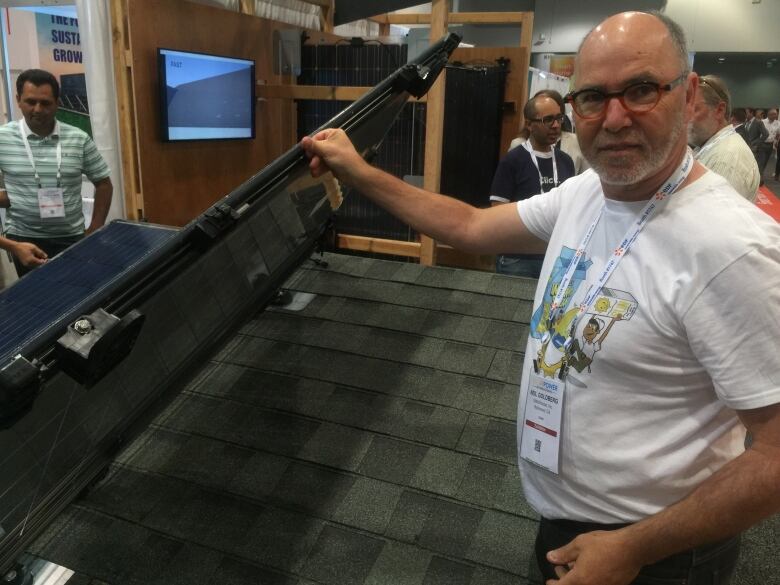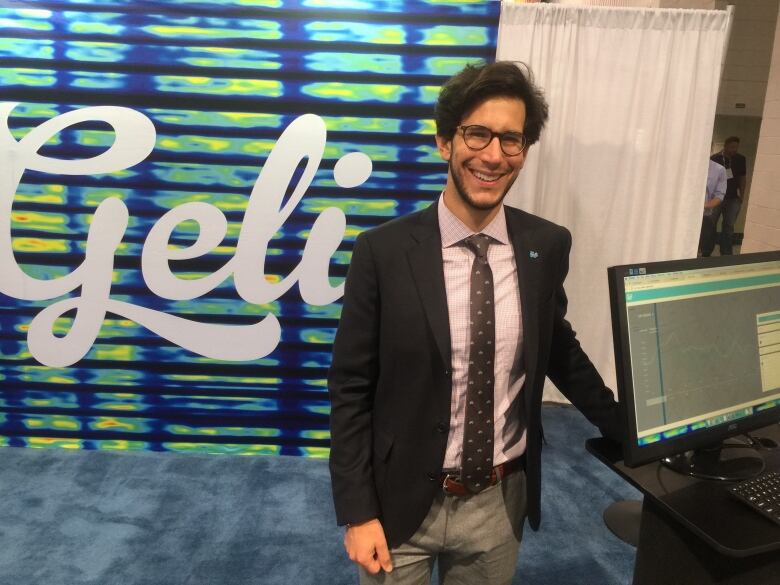From dirt-cheap panels to charging your car with the sun: 3 solar trends
Experts show off the future of solar at North America's largest solar trade show

The exhibition floorseems virtuallyendless. With 600vendors andalmost 18,000visitors,the size of thesolar power trade show in Las Vegas gives you an idea of just how big the American solar industry is becoming.
In 2015 it wasworth almost $23billion US. And according to the SolarEnergy IndustriesAssociation, it's expected to double in 2016.
- As solar installations multiply, U.S. utility companies fight back
- Investment in renewable energy exploding but not in Canada: Bob McDonald
- Politicians are green until they're intimidated by the electoral price: Don Pittis

"The technology's evolutionary, not revolutionary, but the costs are being pushed down year on year," Bromley says. "And in fact, you see oversupply in the amount of solar equipment produced, which means you can source equipment quite cheaply."
A solution for high cost of installation
The cost that still remains relatively high is for installing solar panelson rooftops. But thanks tonew technology from placemat-thin solar panels to innovative engineering installation is getting cheaper, too.

Goldberg's systemhas done away with a costly metal framework."This is attached with the same glue that hangs glass off the sides of skyscrapers, so it's never coming off," Goldberg says.
A second major trend builds on interest in finding ways to recharge electric cars without using fossil fuels.
In the trade show parking lot, Michael Kung of King Solarman demonstrates a solar panel on wheels that's hooked up to a Tesla automobile.
Solar charging in the employee lot
He crawls under the panel and points at a battery underneath."Sun is pretty bright right now. We're charging and storing the power in the battery. And from the battery, we have power from the inverter that charges the car."

"You come to the office, your electrical vehicle is maybe one-thirdor halfempty," Kung says. "So you just park in the parking lot, in afternoon or lunchtime, your car is fully charged." He pauses, lifts his hands towards the sky."Is free!"
The third major trenddoesn't directly involve solar panels.
"A lot of the exciting developments happening at the moment are around the software side," Bromleysays. "How do you integrate solar and storage systems into your environment?What app do you have that shows you how much solar energy you're producing, how much is that saving you?"
Apps track the solar advantage
Coming soon: Apps that tell you when you can make the most money selling power back to the grid.

"It lets homeowners take greater control of their energy," Krulewitz says in his polished pitch."They can see what they're using, where it's coming from, whether it's coming from the grid, solar, battery, and they can decide what to do with it."
But it's the software that his company isdeveloping that shows where the industry is heading.
- Green tech ready to step in when oil prices rise
- California and Canada working toward joint climate change solutions
"What our software will allow for, is when the grid operator the utility says, 'We could really use support from all these residential solar systems,' the homeowner will get an alert on their phone saying, 'Do you want to participate in this grid service, yes or no?'" Krulewitz says."And if they say 'yes,' the utility is now starting to compensate homeowners for excess energy that they sell at a very specific point in time."
This year marked the installation of the millionth solar system in the U.S.That took 40 years from the inception of a solar industry. Installing the next million isexpected to take just two.












_(720p).jpg)


 OFFICIAL HD MUSIC VIDEO.jpg)
.jpg)



























































































